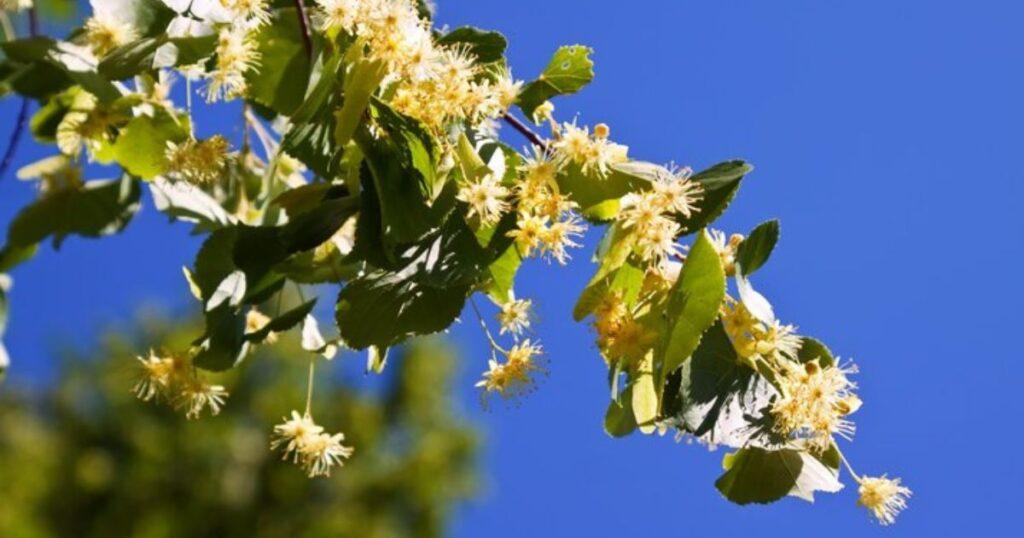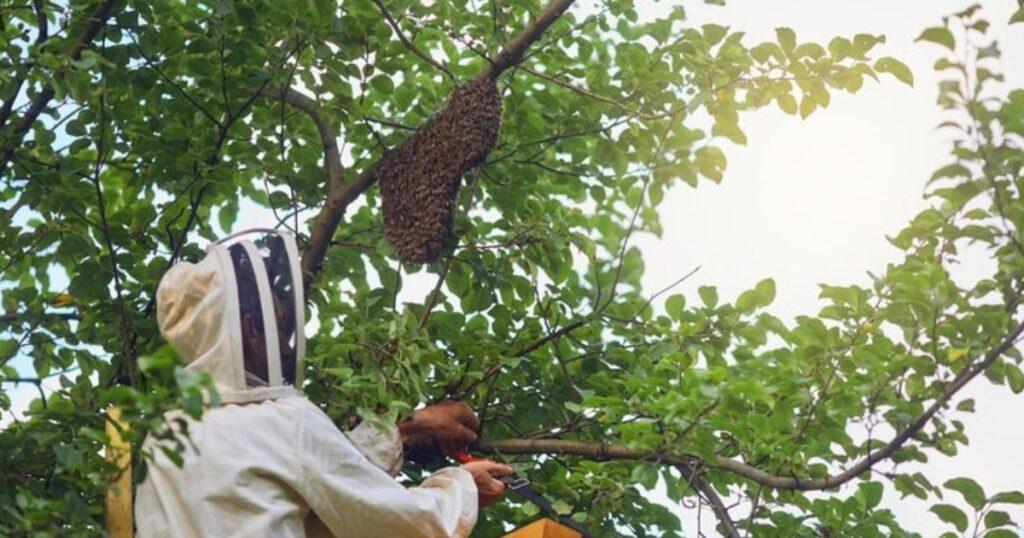Honey Locust vs. Black Locust: When it entails selecting the right tree for your landscape or lawn, it is important to remember different factors, which include appearance, increased traits, and adaptability in your specific place. Two famous picks for decorative and colour trees are the honey locust and black Acre wood, this article, we’re able to delve into a detailed evaluation of honey locust vs. Black locust timber to help you make an knowledgeable choice for your inexperienced area.
Black Locust ( Rubin false acacia)
 Black Locust ( Rubin false acacia)
Black Locust ( Rubin false acacia)
Dark Grasshopper, experimentally known as Robin pseudo acacia and commonly alluded to as wrong acacia or essentially grasshopper, is a deciduous tree local to the southeastern Joined together States. It has since been broadly presented and developed in different parts of the world due to its fancy esteem, solidness, and utility.
Botanical Characteristics
Black Grasshopper trees ordinarily develop to statures extending from 30 to 50 feet (9 to 15 meters), in spite of the fact that uncommon examples can reach up to 80 feet (24 meters). They have a unmistakable appearance with profoundly wrinkled bark that gets to be harsh and profoundly furrowed as the tree develops. The clears out are compound, highlighting numerous pamphlets that deliver them a fluffy appearance. The fragrant white blossoms blossom in pendulous clusters in late spring or early summer, drawing in bees and other pollinators. These are taken after by long, dull brown seed cases that hold on into winter, giving intrigued indeed after the clears out have fallen.
Ecological Role
Ecologically, Dark Beetle plays a noteworthy part in its local and presented environments. It is known for its nitrogen-fixing capabilities, which upgrade soil richness by changing over climatic nitrogen into a shape usable by plants. This characteristic makes it profitable in recovery ventures on debased soils. Be that as it may, it can too ended up intrusive in a few locales where it out competes local vegetation.
Cultural and Verifiable Significance
Culturally, Dark Grasshopper has a wealthy history. It was presented to Europe in the 17th century and rapidly picked up ubiquity as an decorative tree due to its appealing blossoms and difficult, strong wood. The wood of Dark Beetle is famous for its quality and resistance to decay, making it prizes for utilise in fence posts, railroad ties, and other open air applications. Its solidness driven to its moniker “the tree of life” among early American settlers.
Uses and Benefits
Beyond its environmental and social centrality, Dark Grasshopper is esteemed for its timber, which is thick, solid, and profoundly safe to rot. It is utilised in development, furniture making, and as a source of kindling. The tree’s blooms are a source of nectar for nectar generation, yielding a light-coloured nectar with a unmistakable flavour.
Challenges and Considerations
Despite its numerous positive traits, Dark Grasshopper can posture challenges. In a few zones, it has gotten away development and gotten to be obtrusive, uprooting local plant species. Its forceful root framework can too cause issues with underground utilities and asphalts if not appropriately overseen.
Overview for Honey Locust vs. Black Locust:
Honey Locust vs. Black Locust: The black locust, scientifically known as Rubin false acacia, is another deciduous tree native to North America, prizes for its strong wood and attractive appearance.
Nectar grasshopper and dark beetle are both trees local to North America, each having a place to particular genera inside the Barefaced (vegetable) family. Whereas they share a few similitude in appearance and territory inclinations, they contrast altogether in terms of environmental parts, employments, and physical characteristics.
Honey Grasshopper (Editorial triathlons)
Physical Characteristics
- Leaves: Nectar grasshopper takes off are regularly innately compound, including various pamphlets that allow them a fluffy appearance. These pamphlets are little and oval-shaped.
- Thorns: One of the recognising highlights of nectar beetle trees is the nearness of huge thistles on the branches, which can develop up to a few inches long.
- Fruit: The natural product of nectar beetle is a long case that develops in late summer or drop, containing sweet mash and seeds.
- Bark: The bark of develop nectar grasshopper trees is profoundly wrinkled with a unpleasant surface, frequently a fray-brown colour.
Ecological Role
- Honey beetles are frequently found in a assortment of territories, counting floodplains, open forests, and along streams. They are decently tolerant of dry spell and can adjust to diverse soil types.
- As leguminous trees, nectar grasshoppers settle nitrogen in the soil through their root knobs, contributing to soil fertility.
Uses
- Landscaping: Nectar grasshoppers are commonly utilised in arranging due to their decorative esteem, especially cultivars that need thorns.
- Wood: The wood of nectar beetle trees is solid and tough, utilised for making furniture, fence posts, and flooring.
- Food: The sweet mash interior the cases is consumable and generally utilised by Local American tribes.
Black Grasshopper (Robin pseudo acacia)
Physical Characteristics
- Leaves: Dark grasshopper clears out are too innately compound but have less flyers compared to nectar beetle, regularly 7-19 pamphlets per leaf.
- Thorns: Youthful dark grasshopper trees frequently have thistles, but develop trees as a rule lose them, not at all like nectar locust.
- Flowers: Dark grasshopper produces fragrant clusters of white blossoms in late spring, which are alluring to pollinators.
- Bark: The bark of dark beetle is dull and profoundly wrinkled, comparable to nectar grasshopper but frequently more ridged.
Ecological Role
- Black beetles are known for their capacity to colonise aggravated locales and develop quickly, frequently in deserted areas, roadsides, and other irritated habitats.
- They are nitrogen-fixing trees, contributing to soil change, but they can too be forceful intruders in certain ecosystems.
Uses
- Wood: Dark grasshopper wood is exceedingly esteemed for its solidness and resistance to spoil, commonly utilised for fence posts, open air furniture, and railroad ties.
- Landscaping: Like nectar beetle, dark beetle is utilised ornament ally, particularly for its alluring blooms and hardiness.
- Honey Generation: The blossoms of dark grasshopper create inexhaustible nectar, making it an critical nectar plant.
Comparison
- Thorns: Nectar beetle regularly has huge thistles, while dark grasshopper may have thistles when youthful but ordinarily loses them with age.
- Leaf Structure: Nectar beetle has littler, more various flyers compared to dark locust.
- Ecological Part: Nectar grasshoppers are more versatile in terms of territory and are less forceful than dark beetles, which tend to rule irritated areas.
- Wood Quality: Both woods are solid, but dark grasshopper is especially prizes for its resistance to rot and is utilised in applications requiring open air toughness.
Appearance
Honey Locust vs. Black Locust: Black locust leaves are p innately compound, just like honey locust; however, they are darker green. Unlike honey locust, black locust bushes lack thorns. The bark of mature black locust wood is deeply furrowed, giving it a rugged look.
Growth Characteristics
Black locust trees can attain heights of fifty to eighty toes, making them suitable for both coloration and landscaping functions. They are also speedy growers, with an average annual increase of two to three toes. These timbers prefer properly-tired soil and can deal with drought situations once set up.
key takeaways Honey Locust vs Black Locust:
Nectar Locust
- Thorns: Frequently characterised by thistles on branches, particularly when young.
- Leaves: Ordinarily have littler flyers compared to Dark Locust.
- Pods: Create long, bent cases that can reach up to 18 inches in length.
- Hardiness: Tolerant of different soil sorts and urban conditions, making them flexible for landscaping.
- Wood: Wood is not as tough or rot-resistant as Dark Locust.
Black Locust
- Thorns: Ordinarily t hornless, which recognises it from Nectar Locust.
- Leaves: Bigger flyers compared to Nectar Locust.
- Flowers: Known for its fragrant white blooms that sprout in spring.
- Pods: Deliver shorter and less prominent units compared to Nectar Locust.
- Wood: Profoundly strong and rot-resistant, making it important for open air development and fencing
Benefits and Uses
- Hardwood: Black locust timber is highly durable and is often used for fencing, posts, and out-of-door furniture.
- Attractive Flowers: The tree produces clusters of fragrant white flora inside the spring, making it a favourite for decorative functions.
- Nitrogen Fixation: Black locusts are recounted for their capability to restore nitrogen in the soil, improving soil fertility.
- Honey Locust vs. Black Locust: A Detailed Comparison
Now, let’s compare these two tree species across various aspects:
Appearance
Honey Locust vs. Black Locust: Honey locusts are known for their graceful leaves and thorny branches, while black locusts have darker green leaves and lack thorns.
Growth Rate
Both trees are rapid growers; however, honey locusts can grow barely taller.
Soil Tolerance
Honey locusts can tolerate a much broader range of soil types, while black locusts prefer well-tired soil.
Wildlife Attraction
Honey locusts attract the natural world through their candy seed pods, while black locusts are mentioned for their aromatic flowers.
Benefits of Planting Honey-Locust Trees
 Benefits of Planting Honey-Locust Trees
Benefits of Planting Honey-Locust Trees
Honey Locust vs. Black Locust: Honey locusts offer several benefits:
Nectar Beetle (Editorial triathlons)
Honey Grasshopper is a deciduous tree local to North America, known for its unmistakable characteristics and different benefits:
- Aesthetic Request: Nectar Beetle trees are esteemed for their decorative excellence. They have fragile, fern-like foliage that gives a light, breezy appearance in the scene. Amid harvest time, the clears out turn a dynamic yellow, including to their visual appeal.
- Environmental Benefits: These trees contribute emphatically to the environment in a few ways. They give shade, which makes a difference decrease the urban warm island impact, making them profitable in urban scenes. The thick foliage too acts as a windbreak and gives environment and nourishment for wildlife.
- Adaptability: Nectar Beetle trees are versatile to a wide run of soil conditions, counting destitute, dry soils where numerous other trees battle to flourish. They are moreover tolerant of urban conditions such as contamination and compacted soil, making them appropriate for city planting.
- Pods as Natural life Nourishment: One of the particular highlights of Nectar Grasshopper trees is their long, turned seed units. These units contain sweet, nutritious mash that is devoured by different natural life species, counting deer, squirrels, and fowls. This gives an extra nourishment source in the ecosystem.
- Wood Employments: Whereas not as prizes as a few hardwoods, Nectar Grasshopper wood is utilised for different purposes such as furniture making, fence posts, and littler carpentry ventures. It is known for its strength and resistance to decay, especially the heartwood.
- Medicinal Employments: Truly, different parts of the Nectar Beetle tree, counting the bark and units, have been utilised in conventional medication for treating sicknesses such as skin contamination’s and stomach related issues. Be that as it may, these employments are less common today.
- Low Support: Once set up, Nectar Grasshopper trees for the most part require negligible support. They are moderately drought-tolerant once built up and are not inclined to genuine bug or illness issues, making them a low-maintenance choice for numerous scenes.
Benefits of Planting Black Locust Trees

Benefits of Planting Black Locust Trees
Honey Locust vs. Black Locust: Black locusts have their own unique advantages.
Certainly! When comparing Nectar Grasshopper (Editorial triathlons) and Dark Grasshopper (Robin pseudo acacia), both are noticeable deciduous trees local to North America, each with particular characteristics and advantages.
Honey Grasshopper (Editorial triathlons)
- Appearance: Nectar Grasshopper trees ordinarily have a spreading canopy with fine-textured foliage. They are known for their fragile, innately compound takes off and long, turning cases that contain eatable mash and seeds.
- Adaptability: These trees are exceedingly versatile to different soil conditions and climates, flourishing in both urban and country settings. They are tolerably drought-tolerant once set up and can handle urban contamination superior than a few other species.
- Ecological Benefits: Nectar Grasshoppers give great shade due to their thick foliage, which can offer assistance diminish cooling costs in urban zones. Their cases are a nourishment source for natural life, and their nitrogen-fixing capacity progresses soil fertility.
- Wood Employments: Whereas less thick than Dark Grasshopper wood, Nectar Grasshopper wood is esteemed for furniture making, flooring, and enriching woodwork due to its appealing grain and durability.
Black Grasshopper (Robin pseudo acacia)
- Appearance: Dark Grasshopper trees have a more upright and limit crown compared to Nectar Grasshopper. They highlight unmistakable impound clears out with smooth, greyish bark.
- Durability: Dark Grasshopper wood is outstandingly strong, safe to decay and rot, making it profoundly looked for after for open air applications such as fence posts, decking, and furniture. It is considered one of the most tough woods in North America.
- Growth Rate: Dark Grasshoppers develop quickly and can reach development moderately rapidly compared to numerous other hardwood species. This makes them alluring for reforestation and forestry projects.
- Ecological Part: Like Nectar Beetles, Dark Beetles moreover settle nitrogen, improving the soil around them. They draw in pollinators with their fragrant blossoms and give a nourishment source for natural life through their seeds.
Advantages of Dark Beetle over Nectar Locust
- Wood Quality: The essential advantage of Dark Beetle lies in its wood quality. It is outstandingly strong and weather-resistant, making it perfect for applications where life span and quality are critical.
- Growth Rate: Dark Grasshoppers develop speedier than Nectar Beetles, which can be profitable in settings where fast foundation is wanted, such as windbreaks or disintegration control.
- Cultural Importance: Dark Beetle has a more profound social history in North America, being esteemed by early pilgrims for its wood and broadly utilised in conventional creates and development.
Table for Honey Locust vs Black Locust:
| Feature | Honey Locust (Editorial triathlons) | Black Locust (Robin pseudo acacia) |
|---|
| Leaf Structure | Innately compound leaves, small leaflets | Innately compound leaves, larger leaflets |
| Thorns | Often hornless | Typically has thorns |
| Flowers | Creamy white clusters | White, fragrant clusters |
| Fruit Pods | Flat, twisted pods | Smooth, elongated pods |
| Wood Quality | Durable, used in furniture and fencing | Very durable, used in construction |
| Growth Rate | Moderately fast | Rapid growth |
| Adaptability | Tolerant of various soil types and climates | Thrives in poor, dry soils |
| Ecological Role | Provides shade and food for wildlife | Fixes nitrogen in soil, improves soil quality |
| Uses | Landscaping, shade tree, timber | Timber, erosion control, honey production |
| Native Range | Eastern and Central North America | Eastern and Central North America |
FAQs About Honey Locust vs Black Locust:
Q. Can I grow honey locust and black locust trees in the same garden?
Yes, you may develop each tree in the same garden; however, recall their area necessities and make certain they have sufficient room to thrive.
Q. Are honey locust thorns dangerous?
Honey locust thorns may be sharp, but they are not normally risky. However, it is a very good idea to be careful while handling them.
Q.Can I use black locust timber for out-of-door furniture?
Yes, black locust wood is a wonderful choice for outside furniture because of its durability and resistance to decay.
Conclusion
Honey Locust vs. Black Locust: In the end, each honey locust and black locust timber has its own precise characteristics and blessings. Honey locusts are acknowledged for their sleek look and natural world appeal, while black locusts offer durable timber and aromatic flora.When deciding among the two, keep in mind your unique dreams, space availability, and soil situations to make a pleasant preference for your lawn or panorama. Whether you pick the elegance of honey locust or the rugged attraction of black locust, every wood can enhance the splendour of your out-of-doors location.

